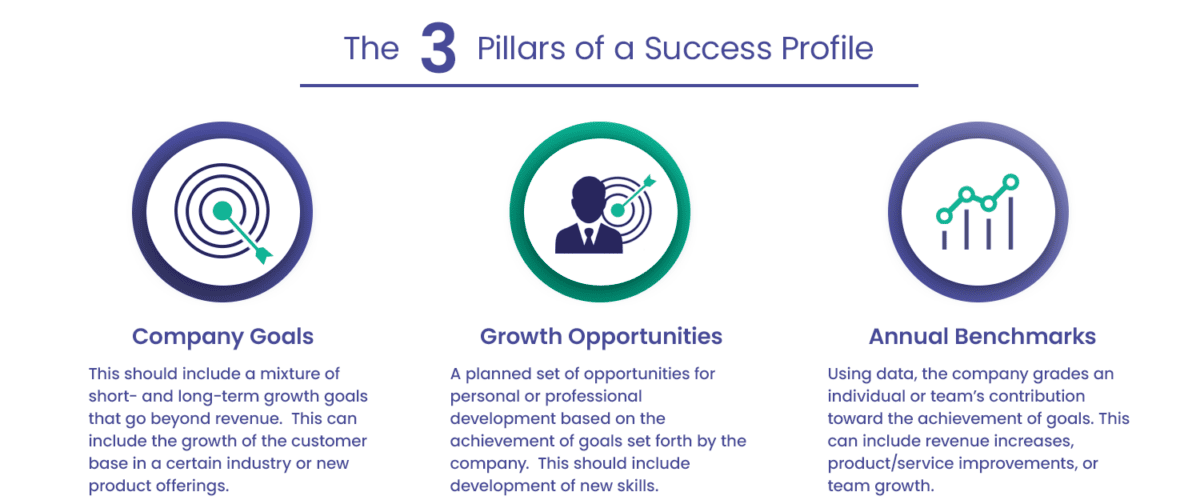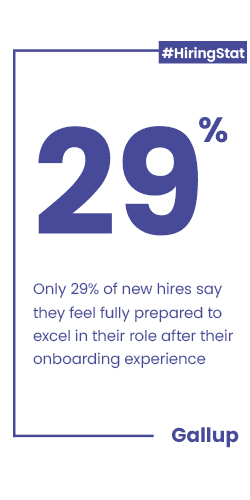Many recruiters and hiring managers must structure their search for long-term success when placing candidates in direct or temp-to-hire positions. Why? Because they structure their candidate search strictly around the job description, leaving out one crucial factor: a Success Profile.
A Success Profile is a list of candidate qualifications for any long-term position structured based on the company’s goals. Rather than starting with the skills and education level of a candidate, a Success Profile requires the recruiter and hiring manager to establish a shared vision and set of expectations for the projects that the chosen candidate will have to take on during their time with the company to achieve both short and long-term goals.
Combining the recruiter’s expertise in talent acquisition and the hiring manager’s deep understanding of the role’s requirements, both parties can align on the critical skills, qualifications, and cultural fit necessary for the position. This alignment is designed to reduce the chances of misunderstandings between the recruiter and hiring manager and help applicants understand the expectations and challenges they may face if hired.

A Success Profile is designed to assist Candidates, Clients, and Recruiters to complete the following tasks:
While the full Success Profile should not be displayed in the job description, recruiters should use elements from the Success Profile when drafting the job description. For example, if the role requires the chosen candidate to collaborate with departments in different offices, willingness to travel must be listed as a requirement for the position.
The Success Profile also serves as a set of guidelines for recruiters during the candidate screening process. Using these guidelines, recruiters have a solid baseline to evaluate resumes and screen candidates with the necessary qualifications and competencies in the ideal candidate profile. This method ensures that the recruiter has substantial evidence for why candidates are chosen to move forward to the interview stage with the hiring manager.
A well-crafted Success Profile enhances the interview and onboarding experience for candidates. Candidates who feel genuinely considered and appreciated are more likely to engage positively with the recruitment process. When recruiters and hiring managers are on the same page, they can provide consistent and clear communication throughout the hiring journey, which can be conveyed to other company members. This fosters a positive employer brand and candidates may recommend the organization to others.
The purpose of a Success Profile is to expedite the recruitment timeline, but it also requires the hiring manager and recruiters to work together. The collaborative effort between recruiters and hiring managers means that there is no back-and-forth regarding candidate requirements, which can otherwise lead to delays. As a result, the proper way to create a Success Profile is to identify the goals and objectives for the following time frames:

Define three objectives for the first 90 days in the role. One of these should be a defined task that would be considered a quick win for the company and the candidate. The second objective must adequately integrate the new hire with the team. In contrast, the third objective should be centered around educating the new team member on internal business practices.
Define five objectives of the company for the next full calendar year. These objectives should focus on growth goals that the candidate’s work can directly affect.
Goals that fall outside the five goals for the first year should be set based on company growth and how this role may grow as the new team member becomes more comfortable with the daily and annual tasks associated with the part. These future goals may also include opportunities for movement within the company.
The success profile is the cornerstone of any successful recruitment strategy for direct-hire and temp-to-hire positions. By collaborating closely with hiring managers to define this profile, recruiters can align their efforts, streamline the recruitment process, and attract top talent that best fits the organization.
The shared vision and understanding between recruiters and hiring managers ensure the suitable candidates are identified, leading to improved employee retention and overall organizational success. Embracing this collaborative approach empowers companies to make better hiring decisions and build a strong, motivated, and competent workforce for the future.
If you’d like to learn how SmartSearch users can collaborate better with their customers, schedule a customized demo or our Hiring Manager Portal and VMS capabilities.